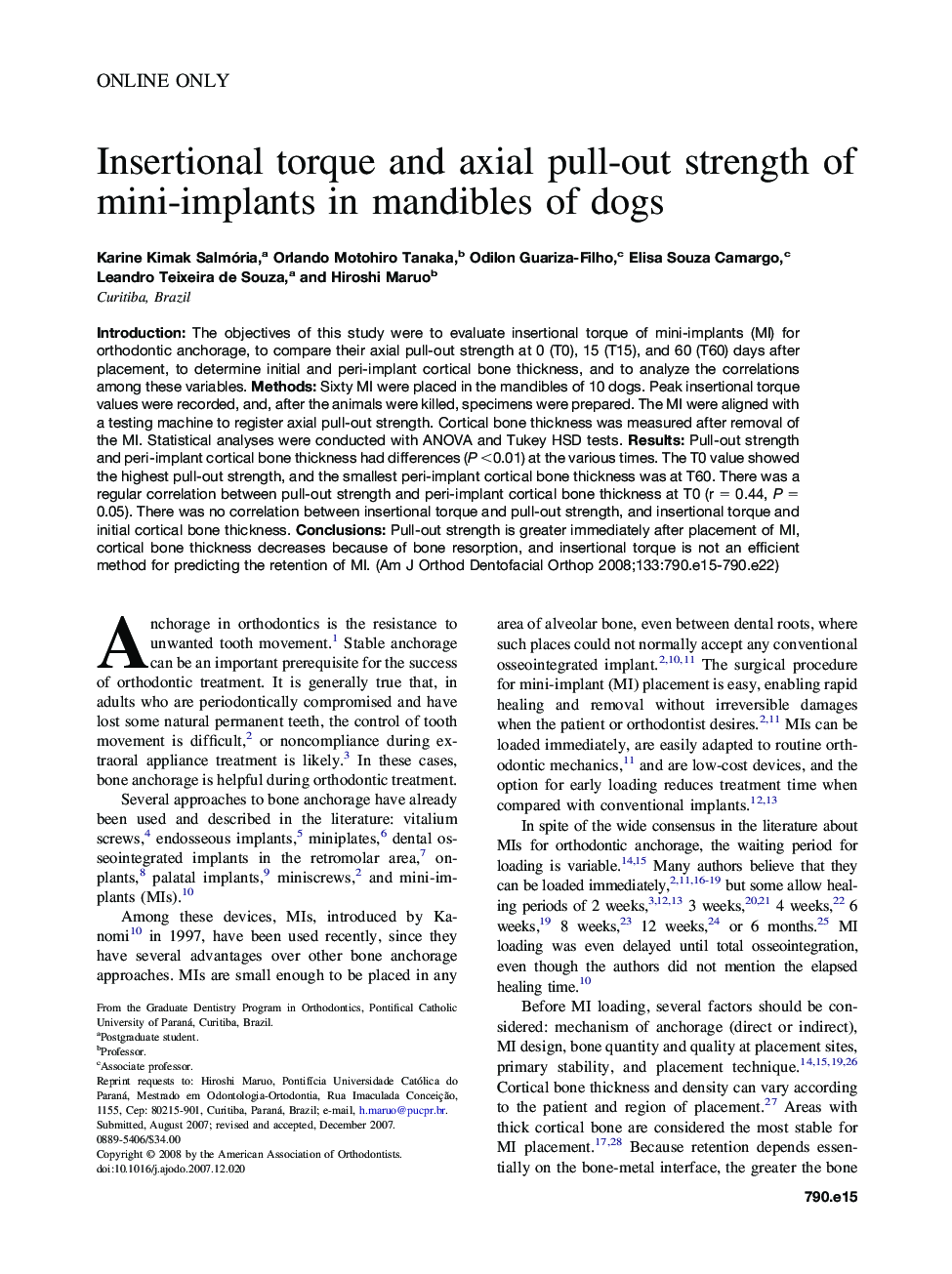| Article ID | Journal | Published Year | Pages | File Type |
|---|---|---|---|---|
| 3119083 | American Journal of Orthodontics and Dentofacial Orthopedics | 2008 | 8 Pages |
Abstract
Introduction: The objectives of this study were to evaluate insertional torque of mini-implants (MI) for orthodontic anchorage, to compare their axial pull-out strength at 0 (T0), 15 (T15), and 60 (T60) days after placement, to determine initial and peri-implant cortical bone thickness, and to analyze the correlations among these variables. Methods: Sixty MI were placed in the mandibles of 10 dogs. Peak insertional torque values were recorded, and, after the animals were killed, specimens were prepared. The MI were aligned with a testing machine to register axial pull-out strength. Cortical bone thickness was measured after removal of the MI. Statistical analyses were conducted with ANOVA and Tukey HSD tests. Results: Pull-out strength and peri-implant cortical bone thickness had differences (P <0.01) at the various times. The T0 value showed the highest pull-out strength, and the smallest peri-implant cortical bone thickness was at T60. There was a regular correlation between pull-out strength and peri-implant cortical bone thickness at T0 (r = 0.44, P = 0.05). There was no correlation between insertional torque and pull-out strength, and insertional torque and initial cortical bone thickness. Conclusions: Pull-out strength is greater immediately after placement of MI, cortical bone thickness decreases because of bone resorption, and insertional torque is not an efficient method for predicting the retention of MI.
Related Topics
Health Sciences
Medicine and Dentistry
Dentistry, Oral Surgery and Medicine
Authors
Karine Kimak Salmória, Orlando Motohiro Tanaka, Odilon Guariza-Filho, Elisa Souza Camargo, Leandro Teixeira de Souza, Hiroshi Maruo,
